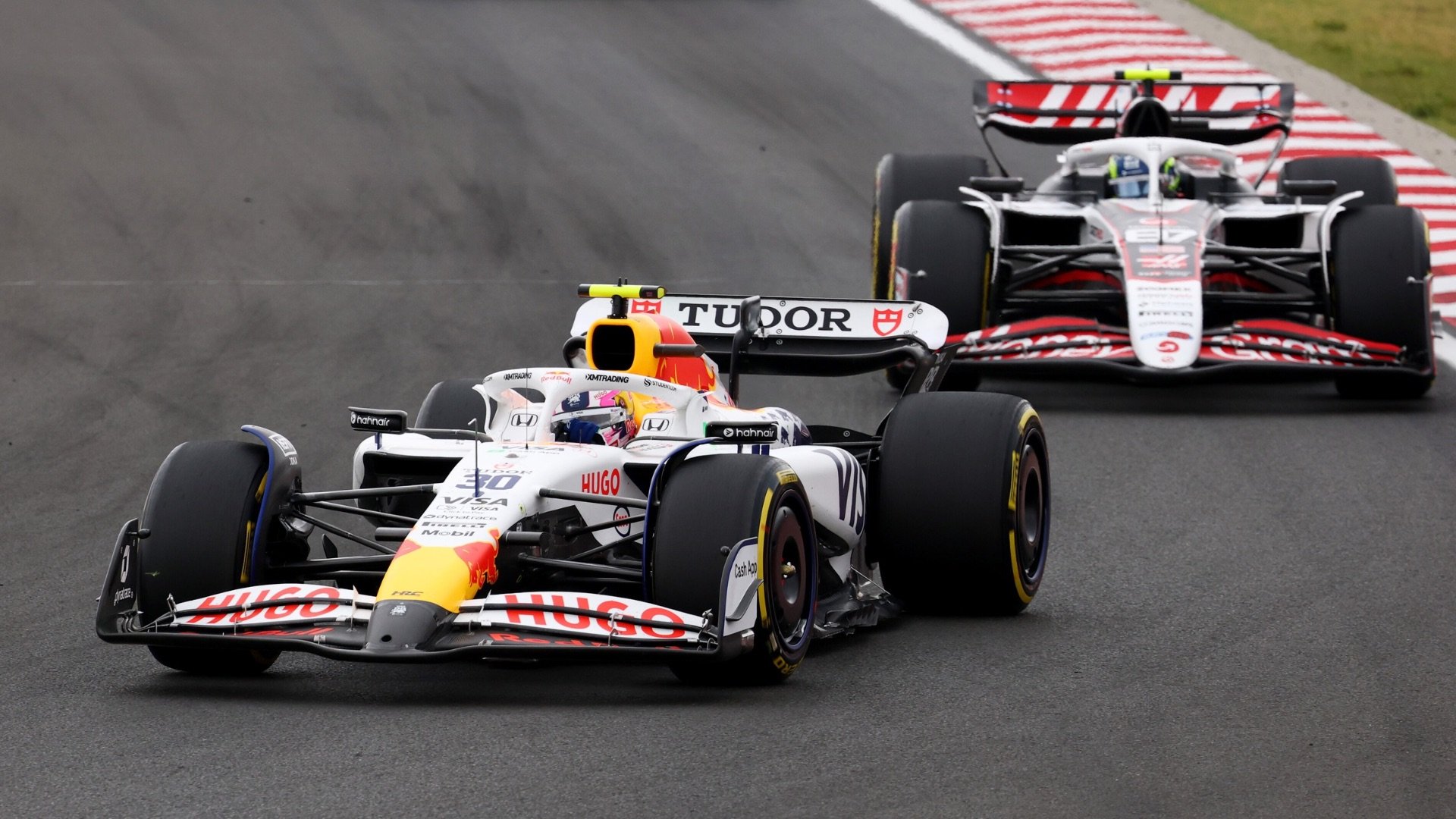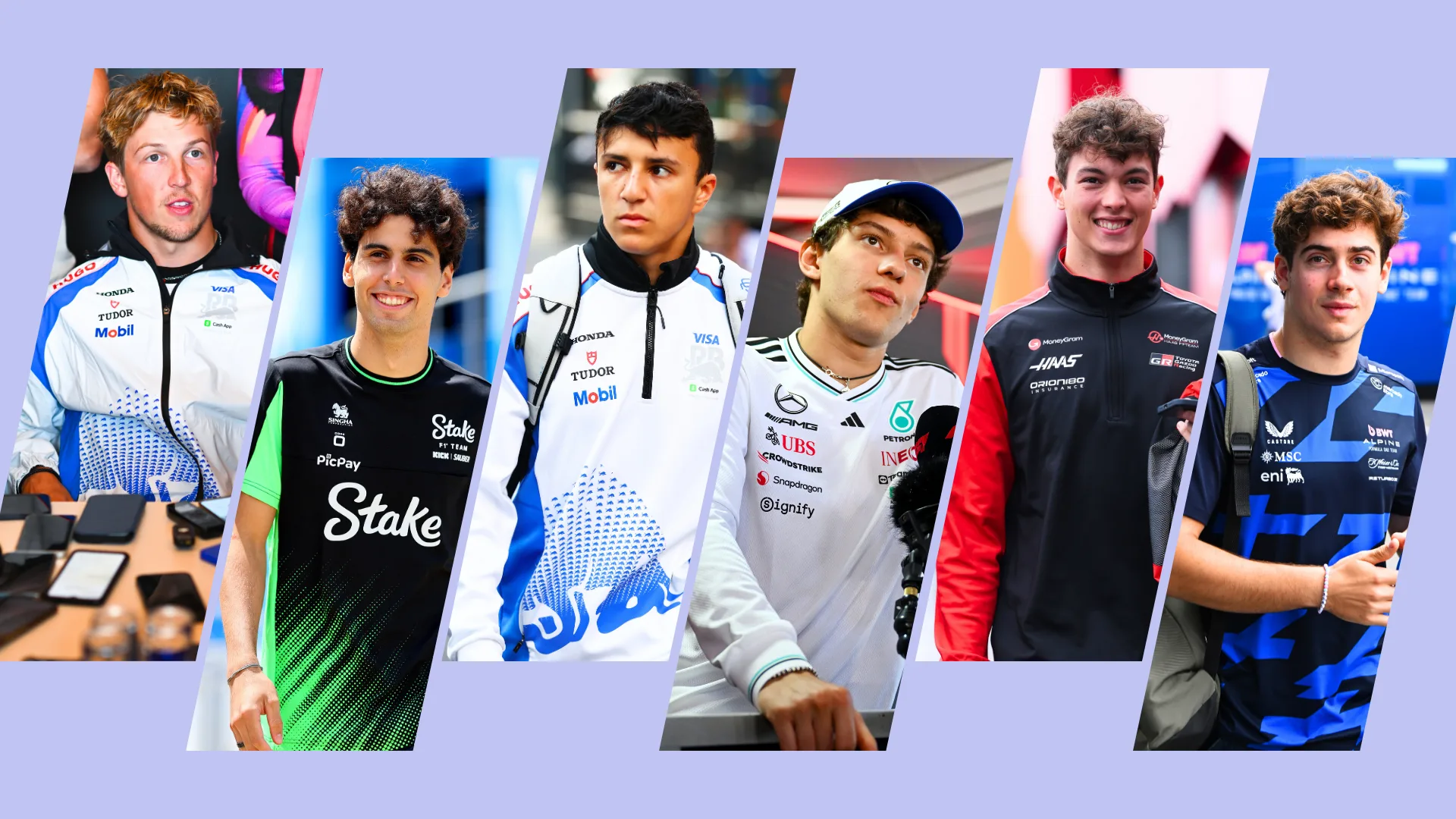The 2025 Formula 1 season has witnessed a seismic shift in the sport’s competitive landscape, not through regulatory changes or budget cap dramas, but through the sheer, unadulterated speed of its newest drivers.
The influx of talents like Isaac Hajar, Kimi Antonelli, Oliver Bearman, and Gabriel Bortoleto has been nothing short of astounding.
They are not merely completing laps; they are setting the grid alight, demonstrating a consistency and daring that has traditionally taken seasoned drivers years to achieve. These rookies are the next generation of competitive Formula 1 drivers, and their rapid success points to a fascinating convergence of digital training, a new idol, and a shared, fearless psychology.
The fundamental question echoing across the paddock is: Why are they so impressively fast, so immediately competitive? The answer is a multi-layered tapestry woven from technological advantage and psychological disposition, but the most significant thread is the rise of the sim racing world.

The Sim Revolution: A Training Ground Harder Than F1
For decades, the path to Formula 1 was a linear climb through karting, junior formulas, and endless testing miles in costly, often outdated, physical cars. Drivers from the 2010 era—legends like Lewis Hamilton and Fernando Alonso—simply didn’t have the chance to “use and abuse” the tools available to today’s generation. The modern rookie, however, arrives on the grid with thousands of hours of virtual experience, having pushed simulated machinery to the absolute limit from the comfort of their homes.
While a simulator cannot perfectly replicate the G-forces or tactile feedback of a real F1 car, it offers something invaluable: unlimited, consequence-free repetition. More critically, it has conditioned these young drivers to master what are universally described as “pointy cars”—vehicles designed to be driven on the nose, requiring constant, delicate management of oversteer.
Gabriel Bortoleto himself articulated this reality, stating that sim racing involves cars “that are sometimes much more difficult than even an F1 car.” This insight is critical. By training on hyper-difficult virtual models, these rookies have developed a core competence in driving aggressive, high-oversteer setups—a style that extracts maximum speed but demands absolute commitment and control. When they step into the real F1 cockpit, the famously tricky, aggressive tone of modern F1 cars feels less like a challenge and more like a return to their digital comfort zone. They are hardwired to handle a constantly rotating car, making their adaptation period astonishingly short.
The Max Verstappen Blueprint: A New Driving Ideal
The technological catalyst of sim racing is paired with a potent human inspiration: Max Verstappen. Verstappen is not just the reigning champion; he is the undisputed role model for every aspiring F1 driver. His commitment to racing—living and breathing it, whether on track or in a video game—is legendary, and his driving style has become the gold standard.
Verstappen’s style is defined by its ultra-aggressive, oversteery, on-the-nose nature. It’s a driving method that many veteran drivers simply “cannot even get close to driving.” This style prioritizes rotation and raw corner-entry speed, and the new rookies are his direct disciples, applying this high-risk, high-reward technique from their very first race.
Isaac Hajar, for instance, is described as the rookie closest to Max’s style. His aggressive, high-risk approach, characterized by late braking and controlled slides, mirrors the champion’s relentless attack.
Kimi Antonelli is a “blend of two legends,” Lewis Hamilton and Verstappen, incorporating aggressive late-braking with an oversteer style reminiscent of 2007 Hamilton.
Even the smoother Gabriel Bortoleto “really tries to emulate what Verstappen does in the car.”
The collective pursuit of this single, fastest driving method, honed in the digital crucible, explains the striking similarity in their approaches and the uniform high quality of their rookie performances.

A Quartet of Excellence: Individual Narratives
While they share a philosophy, their individual stories underscore their immediate impact:
Kimi Antonelli: The High-Pressure Prodigy
Antonelli arrived in F1 with arguably the most hype—and, therefore, the most pressure. Driving for Mercedes, he demonstrated incredible peak performance, with standout results in Miami and Canada. His aggressive style, focusing on late-braking entry and very high corner speed, has shown his ceiling is “close to the highest” of the class. However, inconsistency has been his Achilles’ heel this year, exacerbated by a mid-season suspension change at Mercedes that fundamentally altered the car’s handling. Yet, moments like his unyielding defense against Max Verstappen—a moment where he “didn’t crack”—showcase the mental fortitude that promises a competitive future against George Russell, particularly with the new 2026 regulations looming.
Oliver Bearman: The Rookie of the Season
Driving for Haas, a team that offers a challenging but potent testbed, Bearman has been a revelation. Though he was a teammate of Antonelli’s in F2 and shares a similar late-braking, oversteer tendency, Bearman is distinguished by his control. He uses a V-shaped line, prioritizing a stronger corner exit over maximum apex speed. What has truly elevated Bearman is his adaptation and maturity in race conditions. His “adaptation through the race” has drawn comparisons to Fernando Alonso, a nod to his exceptional tire wear management. His phenomenal run after the summer break secured the majority of Haas’s points, pulling the team into contention for P6 in the Constructors’ Championship. In a car trickier than any other rookie’s, Bearman’s control and race craft have made him a compelling contender for “rookie of the season” honors, setting him on a potential career trajectory mirroring Leclerc at Ferrari.
Isaac Hajar: The High-Risk Specialist
Hajar’s journey began with the rockiest start of the four, crashing before even completing a proper first race lap. Yet, his immediate recovery and subsequent consistency underscore the confidence shared by this class. His aggressive, high-risk approach, defined by late braking and controlled slides, makes him arguably the closest stylistic match to Verstappen. While he needs to smooth out his race day style, his raw speed is undeniable, making him a driver who, given the right machinery—perhaps even a Red Bull—could perform a “decent job” almost immediately.
Gabriel Bortoleto: The Precise Protégé
The Brazilian driver, Gabriel Bortoleto, is the smoothest and most precise of the quartet. While he can call upon aggression for overtaking, his baseline style is measured, focused on emulating Verstappen but perhaps with a preference for a car that offers a more neutral, stable rear end. His maturity is evidenced by his qualifying performance against his experienced teammate, Nico Hulkenberg, a known qualifying master. Bortoleto has consistently out-qualified him on most weekends. His placement with Audi, who are entering the sport with high ambitions, represents a great combination of team potential and raw, disciplined rookie talent, signaling a strong challenge to the veteran hierarchy in the years to come.

The Unwavering Confidence: ‘Big Kahunas’
Beyond the technical skills, the common thread tying these exceptional rookies together is a shared psychological trait: an unwavering, almost audacious, confidence—or as the commentator bluntly put it, “big kahunas.”
F1 is a sport where confidence is, perhaps, the most important trait. This class embodies it perfectly. They are fearless; they are “not afraid of anybody.” A wall-hitting mistake in one race does not carry over to the next. The mentality, inspired by Verstappen, is simply to race at their highest potential at the next Grand Prix, regardless of the previous outcome.
This collective confidence ensures that moments of high-octane drama and surprising results are guaranteed: Hajar on the podium, Bearman delivering a stunning P4 in a non-front-running car, Bortoleto securing a P6, and Antonelli challenging a championship fighter like George Russell.
The class of 2025 is not just fast; they are fundamentally changing the professional prerequisites for a Formula 1 driver. Their success is a powerful testament to the changing dynamics of driver development, proving that the digital race track, combined with the aspiration to emulate the current master, has created a generation of drivers who are not just prepared for the F1 grid, but are ready to dominate it. The ceiling for all four is high; they all have the potential to be future championship contenders if they maintain their current trajectory. The F1 world is officially on notice.